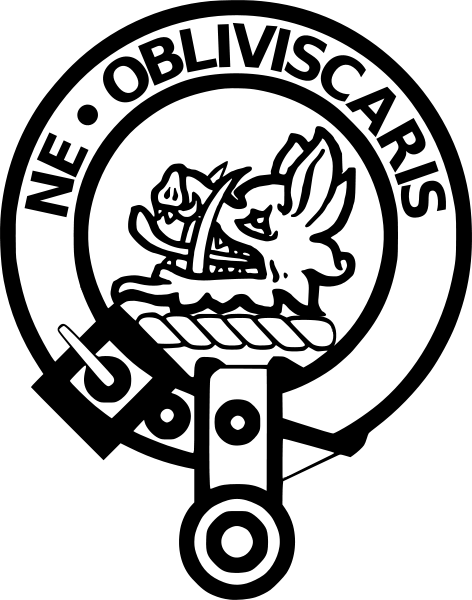Clan Campbell: Feuds, Tartan, History & Castle
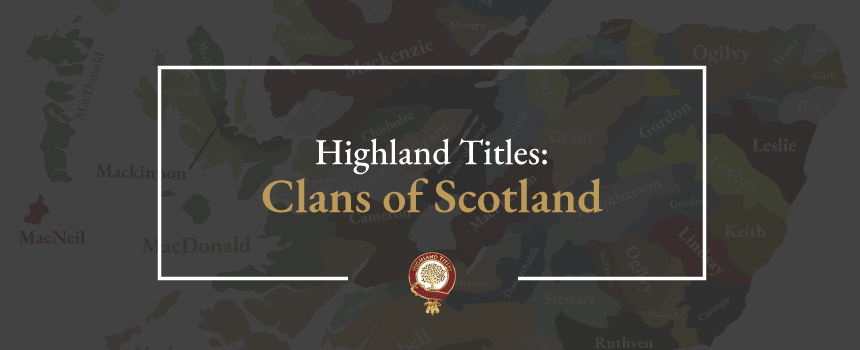
Clan Campbell, politically (and in every other way), was the most successful clan in Scottish history. With that, it has not survived the turning of time’s wheel without a share of its own dark days and disasters. The Campbells of Argyll represent one of the most successful arms of the Clan. However, even they struck hard times due to political and religious regime change. As with all the clans of Scotland, it was often the chosen allegiance to Kings and their religious leanings that made or broke its fortune, as we shall see.
Origin of Campbell Name
The Campbell name, it is said, was derived from the Gaelic for ‘wry mouth’ or even ‘crooked mouth’. This may be due to an ancestor having a physical abnormality. Before this nickname stuck, Clan Campbell was known as Clan Dairmid.
The Campbell name rose to prominence towards the end of the 1200s, when Cailean Mór Caimbeul, famous warrior, was active. Cailean Mór was allegedly a cousin of Robert the Bruce and took part in The Great Cause, a scuffle for the throne of Scotland between the Bruce and John Balliol which had the unfortunate consequence of providing leverage for Edward I of England (the Hammer of the Scots) to assume over lordship of Scotland. This turn of events led to the Scottish Wars of Independence as Robert the Bruce fought to win back his crown.
The legendary and edifying history of Cailean Mór has resulted in each successive chief of the Campbell Clan taking this name and styling himself MacCailean Mór, (to mean ‘a son of’ Cailean Mór). This famous Scottish warrior was knighted by Robert The Bruce in 1280 and his son, Neil, was given lands in Loch Awe, and Argyll. This is also where the Campbells established their power base for the next seven hundred years.
Where are Campbells from in Scotland?
As one of the biggest and most powerful Scottish clans, the Campbells reach was wide-ranging. The clan seat was based in Argyll, and extended across Perth and Kinross and as far north as Nairn.
Is Campbell Scottish or Irish?
The name Campbell is one of the most common names in both Scotland and Northern Ireland. In Scotland, it’s the seventh most common surname, and it’s the third most common in Northern Ireland. It’s also found across the rest of Ireland, as well as further afield in America, Australia and Canada, thanks to widespread Scottish immigration in the 16th and 17th centuries.
What tartan does the Campbell clan wear?
The Clan Campbell tartan is also known as the “Black Watch Tartan”, named after a British army regiment that was formed largely of Campbell soldiers loyal to the Crown. After a 1746 act of proscription against the wearing of Scottish tartan, the Black Watch tartan was the only allowed exception.
Despite mills producing multiple fabric variations of the Campbell tartan, the Clan Chief only recognizes four: the Black Watch, the Campbell of Breadalbane, the Campbell of Cawdor, and the Campbell of Loudoun.
Who can wear Campbell tartan?
Anyone can wear the Campbell tartan! Indeed, the Black Watch tartan is one of the most common tartans chosen by those who don’t have a clan. So if you’re not affiliated with any particular clan, you’re welcome to wear the Campbell tartan and become an honourary member of Clan Campbell!
Campbell Family Crest
The Campbell Family Crest was a symbol of allegiance, used by clan members to show allegiance to their clan chief. The Clan Campbell’s crest features a boar’s head in the centre of the strap and buckle, framed by the Campbell clan motto Ne Obliviscaris, latin for Forget Not.
Why is the Campbell Clan Hated?
It is said that Britons love an underdog but despise too much success. Nothing invokes quite so much ire in certain parts of the highlands as this most successful Highland clan. Even though many, if not all, the clans have indulged in their share of criminal behaviour: blood-letting, stealing, feuding with neighbours, it is the particular success of Clan Campbell which invokes most hatred.
Clan Campbell’s royal connections, along with their fierce loyalty to Robert the Bruce (they fought at the Battle of Bannockburn and beyond) gave them in return many gifts of land and fortunate marriages from grateful Scottish Kings.
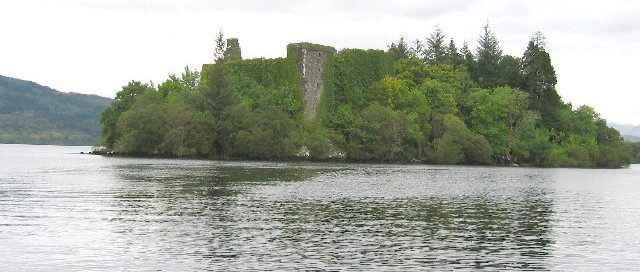
But their success was won not only in the precarious game of feudal loyalty. It was in the tradition of the Campbell men to study the law, and many became powerful lawyers. This gave them an intellectual advantage, and much land was beguiled from other clans through legal loophole and cunningly crafted contractual smallprint. Perhaps this is really where the name ‘Crooked mouth’ came from!
Clan Campbell Castle and Lands
Throughout the 14th century, Clan Campbell amassed a great deal of land from their neighbours, which they leased back to them for comfortable sums. This made the Campbells very rich and much resented. They were a clan with great ambition. You could find the Clan Campbell lands in the Argyll district. The Inveraray Castle in Argyll is still the current seat of the Chief of Clan Campbell, the Duke of Argyll.
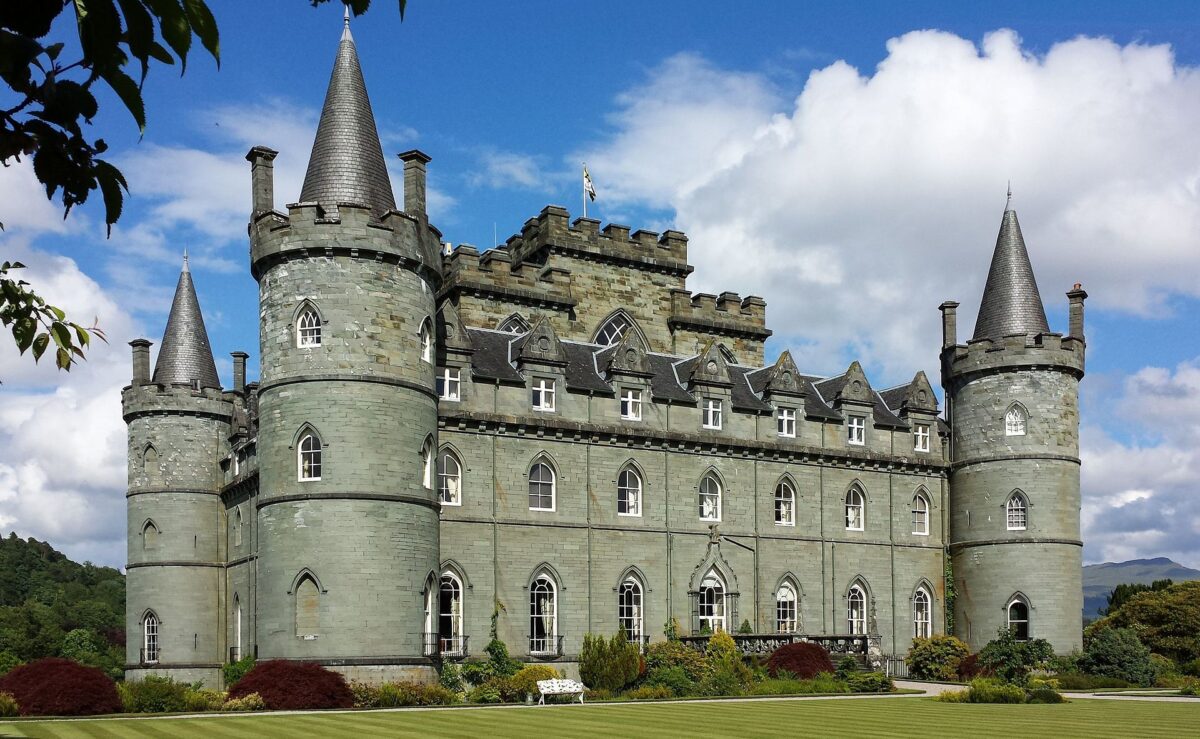
Clan Feuds: Campbell and MacDonald
One of the Scottish clans who hated Campbell’s turn of fortune most was Clan Donald. They are now better known as MacDonald. In the thicker mists of history Clan Donald had been the most powerful clan in the Western Highlands. Descended from Viking kings and known as the “Lords of the Isles”, they commanded the Hebrides and much of the West coast of Scotland. But after 1493, when King James IV forfeited MacDonald lands, their fortunes declined rapidly just as those of Clan Campbell, with royal blessing, were steadily rising (The first Earldom of Argyll had been created in 1457). This must have been more than irksome, because it has led to one of the longest and most famous tribal feuds in world history.
Where it began (as Neil Diamond sings) we can’t begin to know it. But we do know some of the bloodier episodes, and they began long before the Massacre at Glencoe. Clan rivalries fulminated in the 16th century, but the 17th century was a particularly bloody period for the Campbells and the MacDonalds.
Under the auspices of the English Civil War, which spread into Scotland, clan feuding could dress itself in the livery of state sanctioned violence, but the struggle between Covenanters (roundheads) and Royalists (cavaliers) wasn’t the only motivation for the clans of Scotland. Upset over losing their land, the MacDonalds, along with other neighbouring clans, made an agreement to bring down the Campbells. At the time the Campbell chief, Archibald Campbell, 1st Marquess of Argyll was, believe it or not, NOT a royalist! He was committed to the roundhead cause.
The MacDonalds sided with the Royalists, along with other anti-Campbell Clans. Together they fought under James Graham, Marquess of Montrose. But be under no illusions, it wasn’t the Royalist cause so much as Campbell blood the highland troops were after.
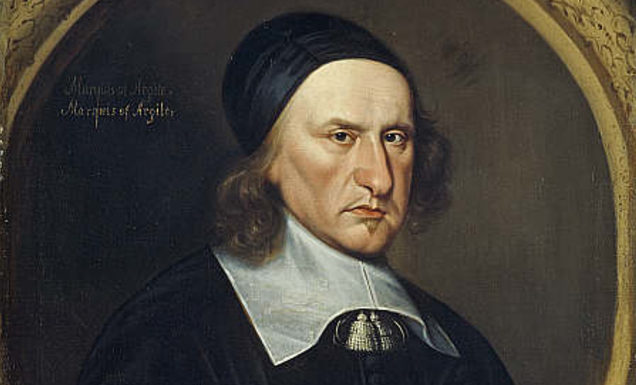
Failed Seige
Alasdair MacColla, a MacDonald soldier from Ireland, with his force of 2000 soldiers made up of MacDonalds, MacLeans and Camerons, took every opportunity to pillage Campbell land. This culminated, on 14th January 1645, in the massacre of Inverary, a Campbell stronghold. After a failed siege on Inverary Castle the whole town was put to the sword.
Ambush
Archibald Campbell was horrified. He immediately set about pursuing the MacColla forces, who by this time were marching north with the rest of Montrose’s army. Unfortunately, MacColla heard of this pursuit and bade the army make a U-turn. They surprised the Campbells in an ambush at Inverlochy in the dawn of 2nd February. The ambush turned into another massacre. Of the 3000-strong Campbell army, about 1200 lay dead including many of the officer class, while only 20 were lost to MacColla’s side. Archibald Campbell witnessed the defeat in despair from his galley on Loch Linnhe, where he had retired with a dislocated shoulder.
Defeat
As Archibald Campbell skulked away in his ship, his retreating men were not spared. MacColla’s bloodthirsty troops pursued them along the route now known as the West Highland Way, overtook them and slaughtered every one. Their aim: to leave not one Campbell standing. Bodies piled up along the path as they went. The slaughter continued for hours, until finally, exhausted by all the bloodletting the MacDonalds gave up the chase, and a few limping Campbells were free to go on their way.
The Massacre of Glencoe
The Massacre of Glencoe took place on February 13th 1692 in the village of Glen Coe in the Scottish Highlands. The Campbells were loyal to the king, while the MacDonalds were sworn Jacobites.
The Scottish government, in 1690, agreed to pay the Jacobite clan chiefs a handsome sum of money if they swore an oath of loyalty to King William III. There were disagreements about how the money would be divided up, though, so none of the chiefs had taken the oath by December 1691, and it was decided that the MacDonalds of Glencoe would be made an example of.
Campbell of Glenlyon led a group of roughly 120 soldiers to Glencoe. There, they stayed with the MacDonalds for 12 days before turning on them, killing at least 30 Macdonalds – the number murdered is often cited as 38.
The Stone of the Campbells (Clach nan Caimbeulach)
This Cairn has replaced an original stone that marked the point at which the MacDonalds stopped pursuing the retreating Campbells. Travellers show their allegiance by adding a stone – if theirs lies with MacDonald – or taking one away – if it lies with Clan Campbell.
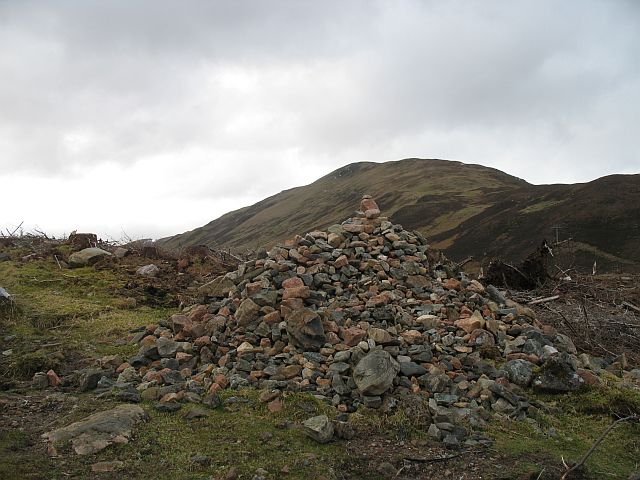
This Royalist-Covenanter war, though it was about Charles I in England, became in Scotland another excuse for blood feuds and clan rivalry.
Campbell Titles and Scotland
As we all know, Cromwell’s idea of ‘Republic of Britain’ was so far ahead of its time. It soon collapsed under the weight of its own improbability and the fortunes of Archibald Campbell collapsed with it. His lands and titles were forfeited and his head skewered on a spike above the Tollbooth in Edinburgh during the Restoration of Charles II. His body (and, after an indecent interval, his head) was interred in St Giles Cathedral.

After Archibald Campbell’s adventure with republicanism, his descendants became staunch supporters of the Protestant monarchy and the Union of Great Britain. Cailean Mór may be turning in his grave: he who gave his life for Scottish independence. Nevertheless, that loyalty to the British Crown has ensured the clan’s survival. Further, the marquessate of Argyll has since been promoted to a dukedom. Today’s Campbell Chief, Torquhill Campbell, the 13th Duke of Argyll, enjoys excessive land ownership and a seat in the Lords. He holds the hereditary position of Master of the Royal Household of Scotland. This title is held by all Argyll heirs since it was bestowed by James IV. As there is no royal household of Scotland any more, we are not sure what this job entails.
Campbells of Argyll and Auchinbreck
Despite the Campbells of Argyll were forgiven and regained their lands after the civil war, other Campbell fortunes were not saved. Consider the Campbells of Auchinbreck. They had been a great military support to the Argyll Campbells. Yet, their Chief had commanded under Archibald Campbell during the massacre at Inverlochy and was executed by the Marquess of Montrose.
The next chief of the Campbells of Auchinbreck had to surrender at the end of the failed Monmouth Rebellion of 1685 against the popish James II (VII of Scotland) and was executed. Three years later William of Orange succeeded in overthrowing the king. By that time, the family had converted to the Catholic faith and now supported the Jacobite cause. Although, this was just in time to lose in both the 1715 and the 1745 Jacobite rebellions. Thus, they forfeited all their lands. Allegiance is a tricky business!
The Campbells Are Coming
Above all, Campbells mustn’t be downhearted, for they have their own rousing anthem: ‘The Campbells are Coming’! It was composed around 1715 by a Scottish piper, and adopted by Argyll’s Highlanders when they defeated the Jacobites. As they marched triumphant into Perth and Dundee in 1715, the army was led by pipers playing the tune below.
Campbells Nowadays
The Campbell name can still be hard to bear. We are indebted to one of our community, Sandra Zaninovich, for her comment on our post about the Glencoe Massacre. It tells a sober tale:
“I work at a clothing store in LA, CA, where about a year ago a lady came in with a Scots accent. When she went to pay, her credit card had the Campbell surname. I asked if she was a genuine Campbell from Scotland. She replied that she was. I then half-jokingly said to her that she must not be a big fan of the MacDonalds then. At that her face darkened and she said that she’d grown up very near the “incident,” as she termed it. She added that the people there had “made her life hell,” and that she hadn’t been able to wait until the moment that she could leave and never go back.”
So ill-feeling towards Clan Campbell continues even now… Will it ever go away?
A Famous Campbell
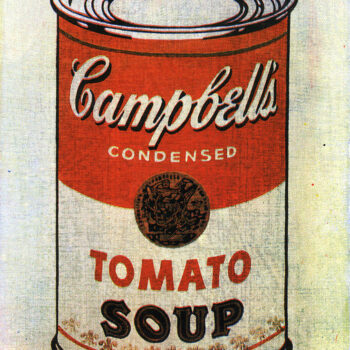
In 1869, Joseph A Campbell, a fruit seller from New Jersey founded a brand new canning company, along side Abraham Anderson, an icebox manufacturer from South Jersey.
The company that initially produced canned tomatoes, vegetables, jellies, condiments, soups, and minced meats would become the highly successful Campbell Soup Company.
Another Campbell success story!
Campbells With Highland Titles
As of June 2019, there are over 3770 plots in the Highland Titles Land Register under the Campbell name.
Highland Titles: A Very Modern Clan
Alike historical clans, our community also share the investment and attachment to the land, our Nature Reserves, and we even have our own tartan and crest. Join the clan by purchasing a plot of land and continue our mission to conserve Scotland, one square foot at a time™!
What you should do next...
- Browse our plots to claim your title of Lord or Lady of the Glen
- Discover the masjetic Kilnaish Estate
- View our fun gifts and accessories, inspired by the Scottish Highlands

